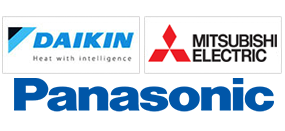
Copyright ©2025 Perfect Air Domestic
Domestic Heat Pumps & Air Conditioning
Call for a quote 0508 247 737 Request Quote
There is much confusion in the market regarding HRV/DVS/Moisture Master type systems, and many times we are asked how these compare with heat pumps.
The answer is not a straight forward one.
The term HRV stands for Heat Recovery Ventilation System, yet these and similar systems advertised, are not heat recovery systems. They are, however, ventilation systems and more aptly, positive pressure ventilation (PPV) systems and work by drawing the air "stored” in the ceiling and pushing it through ducts into the various rooms in a home. On sunny days, the air inside a roof space is generally drier and warmer than the air circulating inside the house, but there is a limited supply of this air in the ceiling space. By pushing this warm air into your home, the system simultaneously forces out existing damp air, thereby reducing condensation. A drier home is a warmer home, but as the available warm air in the roof space is pushed into the house, it is replaced with cooler air from outside, which in turn, is pushed into your home, once again reducing the temperature.
As you can imagine, the air in any roof space is neither fresh nor healthy as it is generally full of dust mites and spores. In order to clean this air, the system filters it prior to it being introduced to your home, but not to the same extent as many heat pumps available on the market. In order for the PPV or forced-air system to continue to provide warm air into your home, it needs to be heated which could further increase your electricity bill.
A heat pump works by circulating existing stale, unhealthy air with fresh, filtered air. Heat pumps are usually room specific, meaning that a single heat pump cannot warm or cool an entire home. They are sized according to the volume of air to be heated/cooled and can be positioned internally so that the air can be circulated to the best advantage. This movement of air also aids in the reduction of condensation, but not generally to the same level as a PPV system. The benefits of heat pumps are their convenience, the speed at which they reach set temperature and their technologically advanced filtration systems.
So as you can see, the two systems really have two separate purposes, the one is specifically for ventilation where condensation is an issue, while the other is focused more on controlling your environment with regard to heating, cooling and air filtration.
Next: Heat pumps and noise